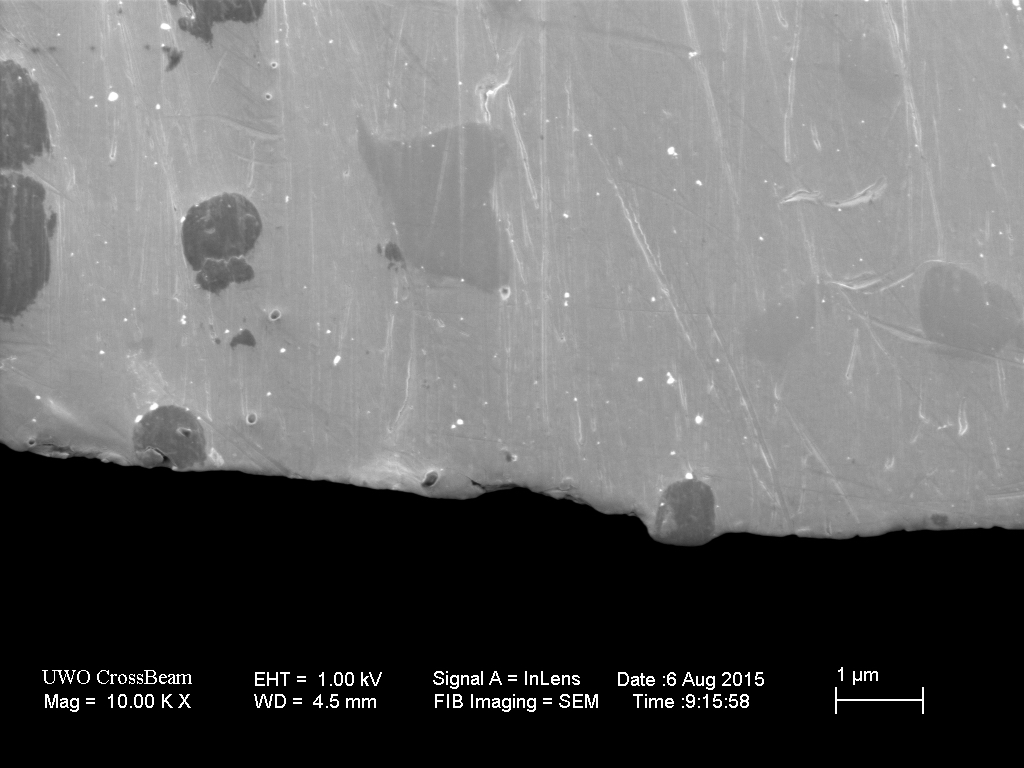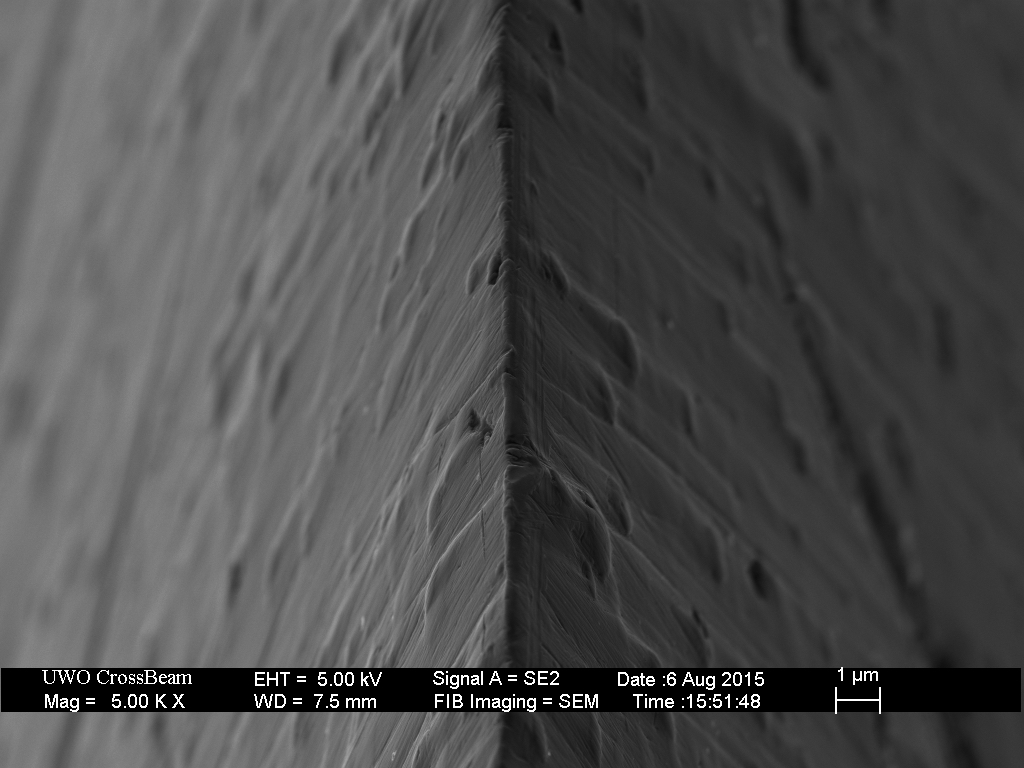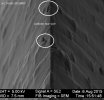-
The BladeForums.com 2024 Traditional Knife is available! Price is $250 ea (shipped within CONUS).
Order here: https://www.bladeforums.com/help/2024-traditional/
You are using an out of date browser. It may not display this or other websites correctly.
You should upgrade or use an alternative browser.
You should upgrade or use an alternative browser.
Carbides and cutting edges
- Thread starter dkb45
- Start date
Man I guess I will never get an answer on if non diamond stropping is worth the effort for vanadium steels that were sharpened with diamond.
Just a guess, but usually the strop has a somewhat soft backing. I presume that non-diamond stropping compound would still polish and refine the steel matrix, but have much less effect on the vanadium carbides. But I know from practice, that non-diamond stropping will refine and improve a vanadium-rich edge honed by diamonds.
BluntCut MetalWorks
Knifemaker / Craftsman / Service Provider
- Joined
- Apr 28, 2012
- Messages
- 3,464
How 'sharp' is your diamond surface/abrasive? It is the key factor whether helping or undermining your quest for super keen edge. Rupture force of dulled diamond/abrasive is much higher than super sharp pointy diamond. Dulled-cutting points where abrading force is below rupture point would result in burnishing and or weaken the matrix and or matrix binding to carbides. It also deflect the thin apex upward, which create wire-edge/burr for both edge leading & trailing stroke.
Strop with SiC/AlO/CBN/Diamond best to do so with angle 3-5 degrees more acute/below the sharpening angle -> clean up the bevel, tapering to barely reach/touch the apex. Otherwise, burr/wire-edge will result after stropping a few strokes at sharpening angle. Of course, the number stroke+pressure depend on the sharpening angle and strop substrate/firmness, the more acute the more problematic, includes rounding & weakening the apex.
Strop with SiC/AlO/CBN/Diamond best to do so with angle 3-5 degrees more acute/below the sharpening angle -> clean up the bevel, tapering to barely reach/touch the apex. Otherwise, burr/wire-edge will result after stropping a few strokes at sharpening angle. Of course, the number stroke+pressure depend on the sharpening angle and strop substrate/firmness, the more acute the more problematic, includes rounding & weakening the apex.
Man I guess I will never get an answer on if non diamond stropping is worth the effort for vanadium steels that were sharpened with diamond.
dkb45
Gold Member
- Joined
- Dec 16, 2012
- Messages
- 4,458
Ah so even though it doesn't refine the carbides, refining the matrix which makes up over half the cutting edge still has benefit, but not quite what diamond or CBN stropping would, and I should strop with a pseudo-convex method, or starting more acute and increasing angle until I get to the edge with very light pressure to minimize damage to the apex and minimize chances of forming a burr or wire edge?
For the record I strop on extremely dense leather. It is cowhide, vegetable treated, bought as scraps, but it was stiff enough to support like 8oz of weight on a 7" piece. VERY firm leather. In between compounds or after every handful of passes on the strop I clean the compound off on a firm felt strip.
For the record I strop on extremely dense leather. It is cowhide, vegetable treated, bought as scraps, but it was stiff enough to support like 8oz of weight on a 7" piece. VERY firm leather. In between compounds or after every handful of passes on the strop I clean the compound off on a firm felt strip.
- Joined
- Jan 15, 2015
- Messages
- 446
Buck Vantage in S30V: sharpened with an aluminum oxide ceramic and stropped on aluminum oxide metal polish on denim:
Here are two vanadium carbides sitting right on the apex:

The vanadium carbides abrade more slowly than the surrounding matrix - that is basic principle of wear resistance.
You can see they sit a bit proud of the matrix:

Here are two vanadium carbides sitting right on the apex:

The vanadium carbides abrade more slowly than the surrounding matrix - that is basic principle of wear resistance.
You can see they sit a bit proud of the matrix:

BluntCut MetalWorks
Knifemaker / Craftsman / Service Provider
- Joined
- Apr 28, 2012
- Messages
- 3,464
BluntCut MetalWorks
Knifemaker / Craftsman / Service Provider
- Joined
- Apr 28, 2012
- Messages
- 3,464
What is the sharpened bevel angle edge?
S30V (~1.4%C) at ~60rc still has decent fracture toughness, so carbide fracturing rate at apex is fairly low - of course edge bevel angle low/hi directly increase/decrease this rate.
Steel with low fracture toughness - combination of high alloy and 60+rc hardness and sub 15dps sharpening bevel angle - will increase apex fracturing rate. Low hardness abrasive will also increase apex fracturing rate & magnitude.
ToddS - if you like, I can send you my 61rc S110V knife for tinker sharpening & SEM imaging - You can keep it as long as you want. Let me know.
S30V (~1.4%C) at ~60rc still has decent fracture toughness, so carbide fracturing rate at apex is fairly low - of course edge bevel angle low/hi directly increase/decrease this rate.
Steel with low fracture toughness - combination of high alloy and 60+rc hardness and sub 15dps sharpening bevel angle - will increase apex fracturing rate. Low hardness abrasive will also increase apex fracturing rate & magnitude.
ToddS - if you like, I can send you my 61rc S110V knife for tinker sharpening & SEM imaging - You can keep it as long as you want. Let me know.
This is an "almost" chip, showing some separation of carbides from the matrix. These sort of events seem to be very rare.
...
- Joined
- Sep 17, 2013
- Messages
- 551
Those SEM images are top notch.


